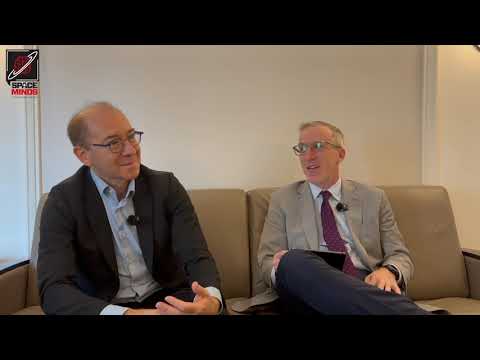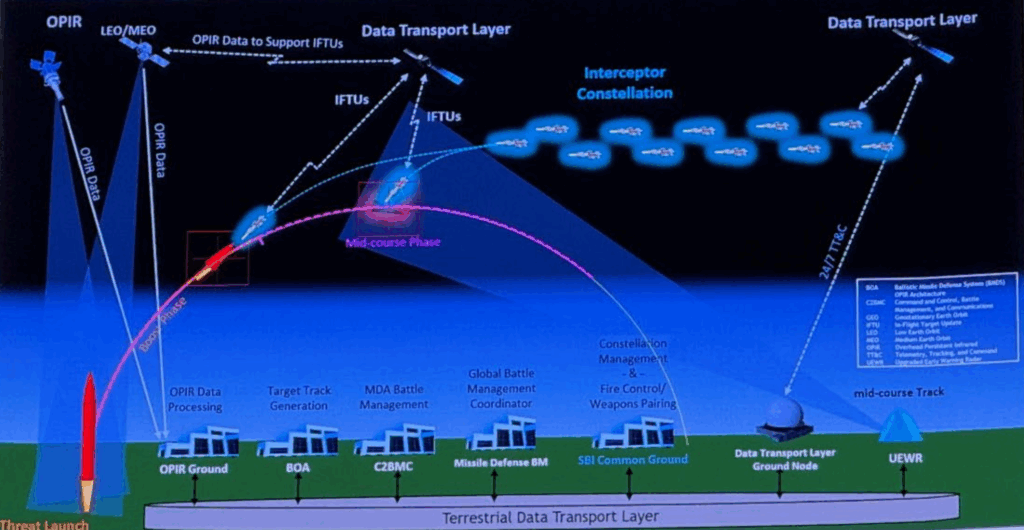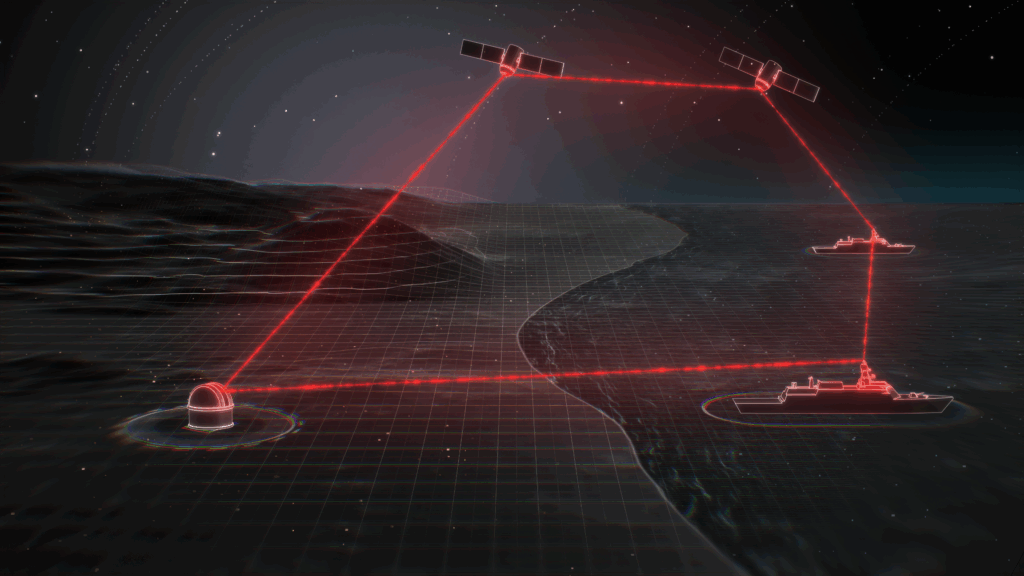Now Reading: Shaping the new era of space
-
01
Shaping the new era of space
Shaping the new era of space

In this week’s special CEO Series edition of Space Minds, we’re at the World Space Business Week in Paris. In today’s episode, SpaceNews editor Mike Gruss talks with Pacome Revillon, CEO of Novaspace.
They discuss the accelerating race in direct-to-device satellite communications, the surge in defense spending and dual-use technologies, and the growing role of sovereignty in global space strategies. Revillon also shares insights on consolidation trends within the industry, the future of AI in space applications, and predictions for what’s ahead in launch and defense markets.
sponsored by
BlackSky empowers defense leaders to see, understand and anticipate change with real-time space-based intelligence. Access on-demand, high-frequency satellite imagery, analytics and dynamic monitoring of the most strategic and critical locations in the world so you can detect threats, verify actions and adapt strategy faster than ever before. Visit blacksky.com to learn more.
Show notes and transcript
Click here for Notes and Transcript
Time Markers
00:00 – Episode introduction
00:58 – Welcome
01:26 – Themes this week
02:41 – Direct-to-Device (D2D) Race
04:52 – Market Scale & Users
06:12 – Defense & Dual-Use Technologies
08:56 – Winners & losers
10:23 – Space Economy
12:32 – Investors & Consolidation
14:16 – China
16:03 – Artificial Intelligence
19:02 – Looking Ahead
Transcript – Pacome Revillon Conversation
This transcript has been edited-for-clarity.
Mike Gruss – Hello and welcome to the Space Minds Podcast in partnership with BlackSky. I’m Mike Gruss from SpaceNews, and we’re here in Paris at World Space Business Week. We’ve had a series of CEOs and leaders on the podcast this week, and today is no different. We’re here with Pacome Revillon, the CEO of Novaspace. Pacome, thanks so much for joining. It’s been a very busy week for you, and lots going on at multiple sites. I want to start with what you’ve been hearing this week. What are some of the themes that you’ve noticed over and over again with the folks who are on stage across all these conferences?
Pacome Revillon – So thanks for inviting me to this discussion. Well, it’s been an extremely busy week, so difficult to summarize in just a few words. But it all started certainly with everything happening in communication, and direct-to-device being one of the real highlights. I mean, there were already transactions announced last week, but there were even new ones between civil parties announced just this week. So clearly we see this is an important part of the market moving and accelerating as we speak. The other part has also been some about consolidation for the commercial sector, and also some of the place where you deliver service—do you deliver assets—that are also with that notion of sovereignty in the background. And we are, at the same time, seeing very defense-focused discussions, that are very much about where we are now, the absolute requirements in terms of preparation given the space that it will be in a few years, but also how you manage that kind of gap of transition period for the armed forces with their own sovereign capabilities, but also very much working with industry and possibly in different ways.
Mike Gruss – Well, let’s start with direct-to-device, because we were talking just briefly beforehand. I said, is it safe to kind of think of this as a race? But we had the big announcement last week with EchoStar and SpaceX. We heard this week from Viasat and Space42, and they’re putting together, the way I read it, the way I saw it when I listened to them, it sounds like a Starlink alternative for countries or governments or customers who want that sovereignty, that control. How do you see this race shaping up, if that’s fair to say? And what do you see happening next there?
Pacome Revillon – So first, I mean, it’s confirming and now accelerating. Certainly, D2D was considered quite a long-term prospect, and now it’s a shorter and shorter horizon. Clearly, there are two aspects. One is really about the spectrum, which is obviously a very key issue—from partnering with MNOs to leverage their spectrum and work together on building essentially a network, or an extension to an MNO network, or your own spectrum, which is very much the deal between EchoStar and SpaceX. That’s the first fundamental: what spectrum will you leverage to deliver capability, and is it partner spectrum or your own? So that’s the first very strategic race going on at the moment. And the next is about the network—whether we’re really talking about text alert messages, or going all the way to broadband smartphone experiences. A lot of focus has been on the broader market, universal access everywhere for consumers and professionals. But I could see very well the role it can play in sovereignty. I mean, when you think about all the automated assets in the future—today the focus is a lot about drones, UAVs, small platforms—direct-to-device capabilities can really be an important stake in the next decade.
Mike Gruss – What kind of numbers—I know when you spoke Monday, you said, I want to say 300 million users? Is that a fair statement?
Pacome Revillon – Yes, I think it’s a fair statement. Obviously it will be a regulatory matter—how many countries can you really serve? Depending on how you do it, if it’s an extension of the MNO, and it’s relatively seamless to switch from one network to the other, and as the terminals are already there, you could pretty quickly go to high numbers. That could go to that 300 million type of numbers by the end of the decade. If you go for your own spectrum network, you have to deal with the manufacturers—the Samsungs, Apples of this world—to enable the capability in the next generation of devices. That may take a bit more time. So yes, I believe those numbers are realistic. But it’s also pending deployment of the network in orbit, regulatory play, and service delivery at large scale.
Mike Gruss – One of the other themes you just touched on was military spending. I think there’s always been interest, particularly in NATO countries, putting more toward defense. And the thinking has been a lot of that money will go toward space. There’s also interest in dual-use technologies. Talk to me a little bit about where you see that market for military, and especially outside of the United States.
Pacome Revillon – So first, just because of the geopolitical context as it is, we’ve seen already increases in defense budgets in the last two or three years in a set of countries. But clearly, commitments to double or significantly increase the share of GDP that goes to defense have been released as strategies. Those will have to turn into actual budgets in the next year or two, and then procurement. Global defense spending won’t be just about space, but hundreds of billions should flow into defense capabilities. Even though space is a relatively small share, it has been regularly increasing because it’s increasingly critical. Space used to be for planning operations, but now it’s closer to the tactical edge—real-time decision-making, kill chain and others. So defense must ask: what should be sovereign, and what can be faster and better acquired with industry? That’s why we’ve seen governments buying data, working with industry, and inviting joint working groups to optimize space use. Those are the trends, and they will impact the market.
Mike Gruss – Who are some of the winners and losers with this change, even within the space industry?
Pacome Revillon – Well, it’s still a bit early to say. But some companies have performed very well. In Europe, for example, Airbus has signed agreements with five-plus countries in recent months, either direct sales or joint ventures with incumbent defense stakeholders. Globally, we’ve also seen a surge in remote sensing consumption over the past two years. Now maybe a bit of an interim phase before budgets flow again. In Europe, there’s an IRIS² program, with industry discussions ongoing. Governments will have to choose among startups and newcomers which ones are most critical in the next few years and support them to scale.
Mike Gruss – You talked about the size of the space economy—$596 billion on path to $944 billion in 2033. Why does that number matter?
Pacome Revillon – I think there are two or three aspects. The space economy shows the impact space has on strategic, social, and economic issues. Governments are important stakeholders, so sizing the role of space in the global economy matters. For companies, it’s about positioning: are you just delivering satellites, or offering end-to-end capability? No company can address the entire economy, but moving the needle on your share is critical.
Mike Gruss – How about from the investor standpoint? Where do you see opportunities for consolidation, mergers, acquisitions?
Pacome Revillon – Because of this transition period, there’s been an accelerating round of transactions in recent years—50-plus on average per year. We’ve seen spectrum transactions, rumors of major European satellite manufacturers merging, and of course SES’s recent transaction. Many companies are now eight to ten years old. There will be winners and losers, but I expect more consolidation in the next two or three years. Scale and adapting to the new market require it.
Mike Gruss – I was a little surprised we didn’t hear more about China this week. What’s your view?
Pacome Revillon – It hasn’t been discussed directly, but China is progressing extremely fast—from lunar exploration to security-driven capabilities. Behind the scenes, China is a big factor, both for defense and the industrial sector. While its domestic market is protected, globally it’s quite open, and Chinese companies are increasingly competitive abroad.
Mike Gruss – When I look at AI, it’s hard to wrap your arms around how it’s being used in space. Where are you on AI in space?
Pacome Revillon – That’s a great question. The first and fastest use is in remote sensing and automated analytics. But you can’t yet trust it for critical capabilities without control and review. Many companies are conducting trials in design and industrial processes. Over the next few years, adoption will grow step by step, with secure AI frameworks required. And the next generation of engineers is already using AI in their studies, so they’ll expect to apply it in industry. I believe the transformation will be massive, though it’s hard to predict what a space asset will look like in 2035 or 2040.
Mike Gruss – A year from now at WSBW, give me a bold prediction.
Pacome Revillon – The industry is moving so fast, but I think launch will be critical—deploying new architectures requires new launch capabilities like Starship. I also expect more mergers and acquisitions, and by then today’s defense budget commitments should be actioned, which will significantly impact the market.
Mike Gruss – Great. Pacome, thanks so much for joining us. This was a lot of fun. And thanks to our partner BlackSky for supporting this podcast. All of our coverage from WSBW is available at SpaceNews.com.
About Space Minds
Space Minds is a new audio and video podcast from SpaceNews that focuses on the inspiring leaders, technologies and exciting opportunities in space.
The weekly podcast features compelling interviews with scientists, founders and experts who love to talk about space, covers the news that has enthusiasts daydreaming, and engages with listeners. Join David Ariosto, Mike Gruss and journalists from the SpaceNews team for new episodes every Thursday.
Watch a new episode every Thursday on SpaceNews.com and on our YouTube, Spotify and Apple channels.
Be the first to know when new episodes drop! Enter your email, and we’ll make sure you get exclusive access to each episode as soon as it goes live!
Space Minds Podcast
“*” indicates required fields
Note: By registering, you consent to receive communications from SpaceNews and our partners.
Stay Informed With the Latest & Most Important News
-
 012024 in Review: Highlights from NASA in Silicon Valley
012024 in Review: Highlights from NASA in Silicon Valley -
 02Panasonic Leica Summilux DG 15mm f/1.7 ASPH review
02Panasonic Leica Summilux DG 15mm f/1.7 ASPH review -
 03How New NASA, India Earth Satellite NISAR Will See Earth
03How New NASA, India Earth Satellite NISAR Will See Earth -
 04And Thus Begins A New Year For Life On Earth
04And Thus Begins A New Year For Life On Earth -
 05Astronomy Activation Ambassadors: A New Era
05Astronomy Activation Ambassadors: A New Era -
06SpaceX launch surge helps set new global launch record in 2024
-
 07Space Force plans new ‘Futures Command’ amid pressure to speed up modernization
07Space Force plans new ‘Futures Command’ amid pressure to speed up modernization




















